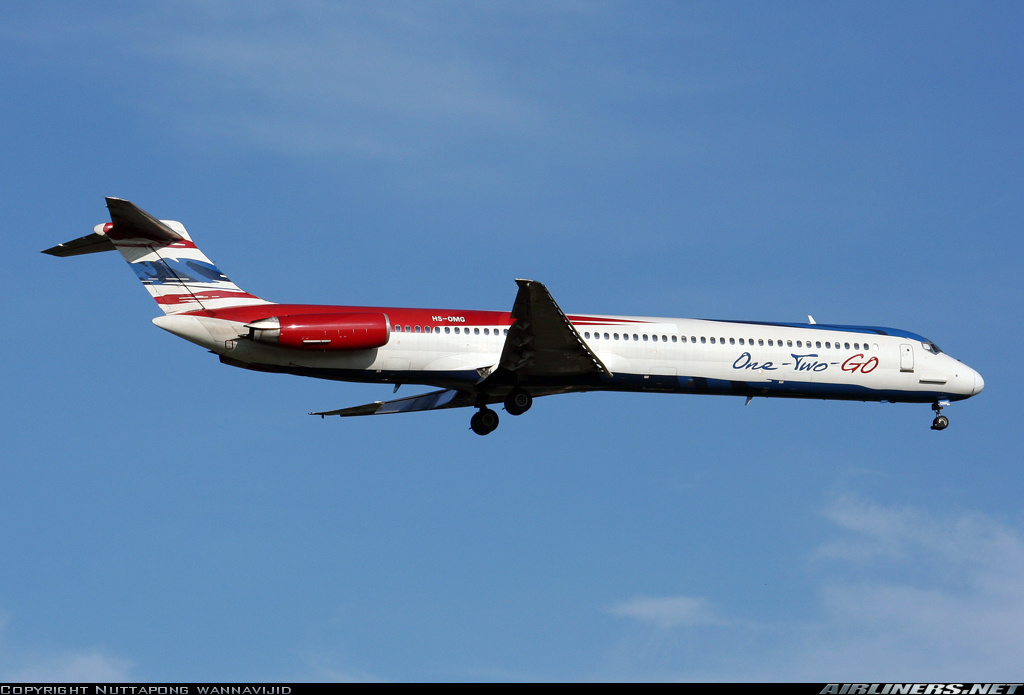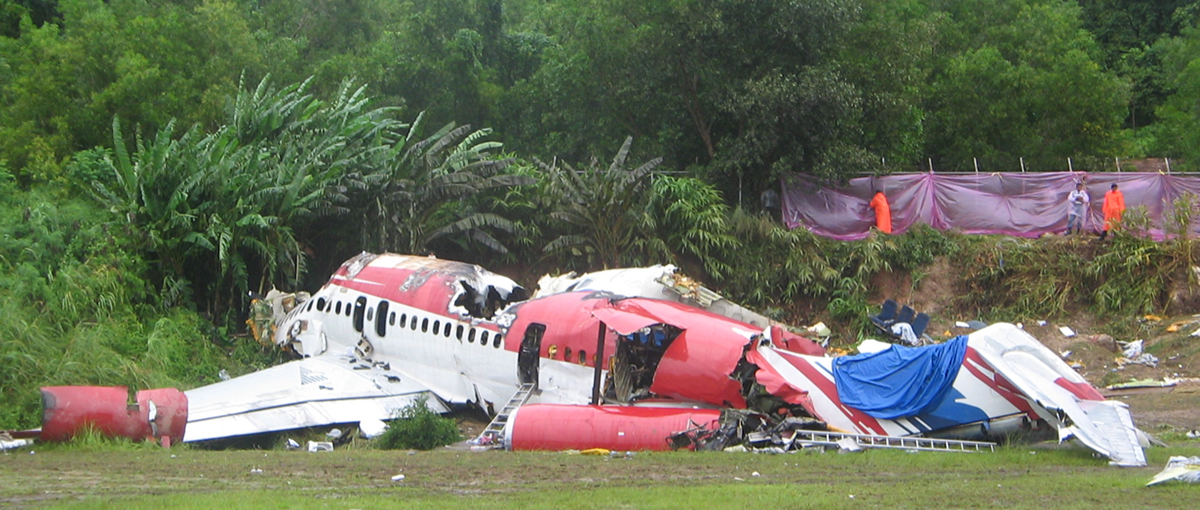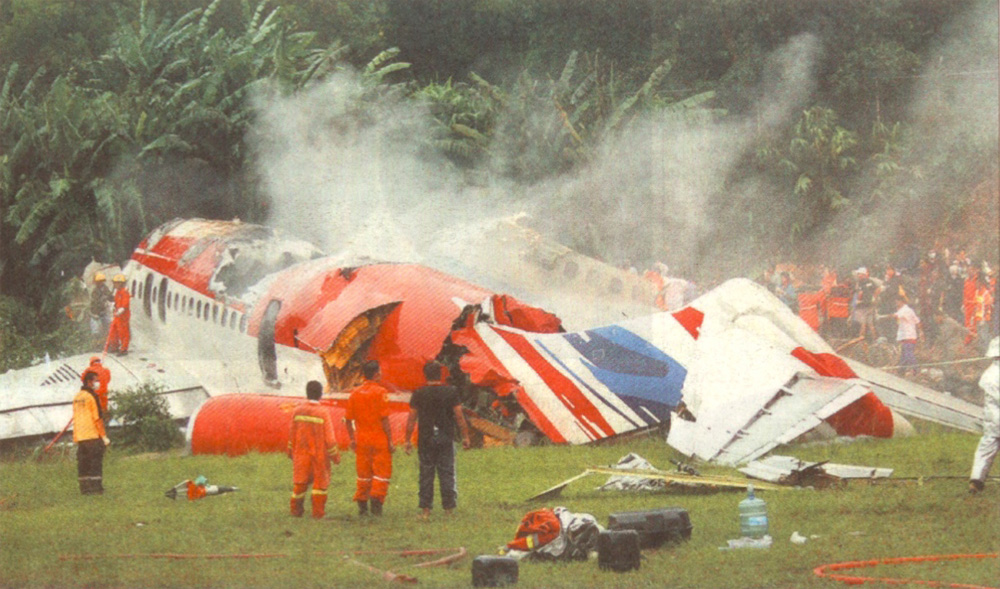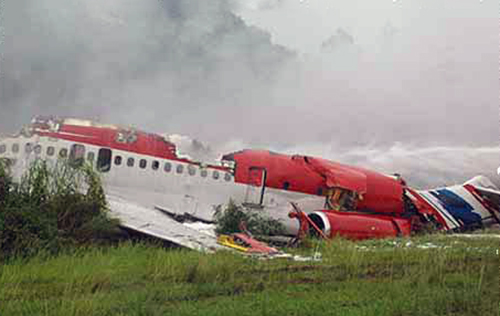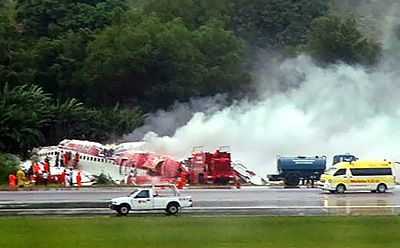Country
Crash of a McDonnell Douglas MD-82 in Madrid: 154 killed
Date & Time:
Aug 20, 2008 at 1424 LT
Registration:
EC-HFP
Survivors:
Yes
Schedule:
Madrid - Las Palmas
MSN:
53148/2072
YOM:
1993
Flight number:
JKK5022
Crew on board:
6
Crew fatalities:
Pax on board:
166
Pax fatalities:
Other fatalities:
Total fatalities:
154
Captain / Total hours on type:
5776.00
Copilot / Total hours on type:
1054
Aircraft flight hours:
31963
Aircraft flight cycles:
28133
Circumstances:
An MD-82 passenger plane, registered EC-HFP, was destroyed when it crashed on takeoff at Madrid-Barajas Airport (MAD), Spain. Of the aircraft’s occupants, 154 were killed, including all six crew members. Eighteen passengers were seriously injured. The MD-82 aircraft operated Spanair flight JK5022 from Madrid-Barajas (MAD) to Gran Canaria (LPA). The estimated departure time was 13:00. The aircraft was authorized by control for engine start-up at 13:06:15. It then taxied to runway 36L from parking stand T21, which it occupied on the apron of terminal T2 at Barajas. The flaps were extended 11°. Once at the runway threshold, the aircraft was cleared for takeoff at 13:24:57. The crew informed the control tower at 13:26:27 that they had a problem and that they had to exit the runway. At 13:33:12, they communicated that they were returning to the stand. The crew had detected an overheating Ram Air Temperature (RAT) probe. The aircraft returned to the apron, parking on remote stand R11 of the terminal T2 parking area. The crew stopped the engines and requested assistance from maintenance technicians to solve the problem. The mechanic confirmed the malfunction described in the ATLB, checked the RAT probe heating section of the Minimum Equipment List (MEL) and opened the electrical circuit breaker that connected the heating element. Once complete, it was proposed and accepted that the aircraft be dispatched. The aircraft was topped off with 1080 liters of kerosene and at 14:08:01 it was cleared for engine start-up and to taxi to runway 36L for takeoff. The crew continued with the tasks to prepare the airplane for the flight. The conversations on the cockpit voice recorder revealed certain expressions corresponding to the before engine start checklists, the normal start list, the after start checklist and the taxi checklist. During the taxi run, the aircraft was in contact with the south sector ground control first and then with the central sector. On the final taxi segment the crew concluded its checks with the takeoff imminent checklist. At 14:23:14, with the aircraft situated at the head of runway 36L, it was cleared for takeoff. Along with the clearance, the control tower informed the aircraft that the wind was from 210° at 5 knots. At 14:23:19, the crew released the brakes for takeoff. Engine power had been increased a few seconds earlier and at 14:23:28 its value was 1.4 EPR. Power continued to increase to a maximum value of 1.95 EPR during the aircraft’s ground run. The CVR recording shows the crew calling out "V1" at 14:24:06, at which time the DFDR recorded a value of 147 knots for calibrated airspeed (CAS), and "rotate" at 14:24:08, at a recorded CAS of 154 knots. The DFDR recorded the signal change from ground mode to air mode from the nose gear strut ground sensor. The stall warning stick shaker was activated at 14:24:14 and on three occasions the stall horn and synthetic voice sounded in the cockpit: "[horn] stall, [horn] stall, [horn] stall". Impact with the ground took place at 14:24:23. During the entire takeoff run until the end of the CVR recording, no noises were recorded involving the takeoff warning system (TOWS) advising of an inadequate takeoff configuration. During the entire period from engine start-up while at parking stand R11 to the end of the DFDR recording, the values for the two flap position sensors situated on the wings were 0°. The length of the takeoff run was approximately 1950 m. Once airborne, the aircraft rose to an altitude of 40 feet above the ground before it descended and impacted the ground. During its trajectory in the air, the aircraft took on a slight left roll attitude, followed by a fast 20° roll to the right, another slight roll to the left and another abrupt roll to the right of 32°. The maximum pitch angle recorded during this process was 18°. The aircraft’s tail cone was the first part to impact the ground, almost simultaneously with the right wing tip and the right engine cowlings. The marks from these impacts were found on the right side of the runway strip as seen from the direction of the takeoff, at a distance of 60 m, measured perpendicular to the runway centerline, and 3207.5 m away from the threshold, measured in the direction of the runway. The aircraft then traveled across the ground an additional 448 m until it reached the side of the runway strip, tracing out an almost linear path at a 16° angle with the runway. It lost contact with the ground after reaching an embankment/drop-off beyond the strip, with the marks resuming 150 m away, on the airport perimeter road, whose elevation is 5.50 m lower than the runway strip. The aircraft continued moving along this irregular terrain until it reached the bed of the Vega stream, by which point the main structure was already in an advanced state of disintegration. It is here that it caught on fire. The distance from the initial impact site on the ground to the farthest point where the wreckage was found was 1093 m.
Probable cause:
The crew lost control of the airplane as a consequence of entering a stall immediately after takeoff due to an improper airplane configuration involving the non-deployment of the slats/flaps following a series of mistakes and omissions, along with the absence of the improper takeoff configuration warning.
The crew did not identify the stall warnings and did not correct said situation after takeoff. They momentarily retarded the engine throttles, increased the pitch angle and did not correct the bank angle, leading to a deterioration of the stall condition.
The crew did not detect the configuration error because they did not properly use the checklists, which contain items to select and verify the position of the flaps/slats, when preparing the flight. Specifically:
- They did not carry out the action to select the flaps/slats with the associated control lever (in the "After Start" checklist);
- They did not cross check the position of the lever or the status of the flap and slat indicating lights when executing the" After Start" checklist;
- They omitted the check of the flaps and slats during the "Takeoff briefing" item on the "Taxi" checklist;
- The visual check done when executing the "Final items" on the "Takeoff imminent" checklist was not a real check of the position of the flaps and slats, as displayed on the instruments in the cockpit.
The CIAIAC has identified the following contributing factors:
- The absence of an improper takeoff configuration warning resulting from the failure of the TOWS to operate, which thus did not warn the crew that the airplane's takeoff configuration was not appropriate. The reason for the failure of the TOWS to function could not be reliably established.
- Improper crew resource management (CRM), which did not prevent the deviation from procedures in the presence of unscheduled interruptions to flight preparations.
The crew did not identify the stall warnings and did not correct said situation after takeoff. They momentarily retarded the engine throttles, increased the pitch angle and did not correct the bank angle, leading to a deterioration of the stall condition.
The crew did not detect the configuration error because they did not properly use the checklists, which contain items to select and verify the position of the flaps/slats, when preparing the flight. Specifically:
- They did not carry out the action to select the flaps/slats with the associated control lever (in the "After Start" checklist);
- They did not cross check the position of the lever or the status of the flap and slat indicating lights when executing the" After Start" checklist;
- They omitted the check of the flaps and slats during the "Takeoff briefing" item on the "Taxi" checklist;
- The visual check done when executing the "Final items" on the "Takeoff imminent" checklist was not a real check of the position of the flaps and slats, as displayed on the instruments in the cockpit.
The CIAIAC has identified the following contributing factors:
- The absence of an improper takeoff configuration warning resulting from the failure of the TOWS to operate, which thus did not warn the crew that the airplane's takeoff configuration was not appropriate. The reason for the failure of the TOWS to function could not be reliably established.
- Improper crew resource management (CRM), which did not prevent the deviation from procedures in the presence of unscheduled interruptions to flight preparations.
Final Report:

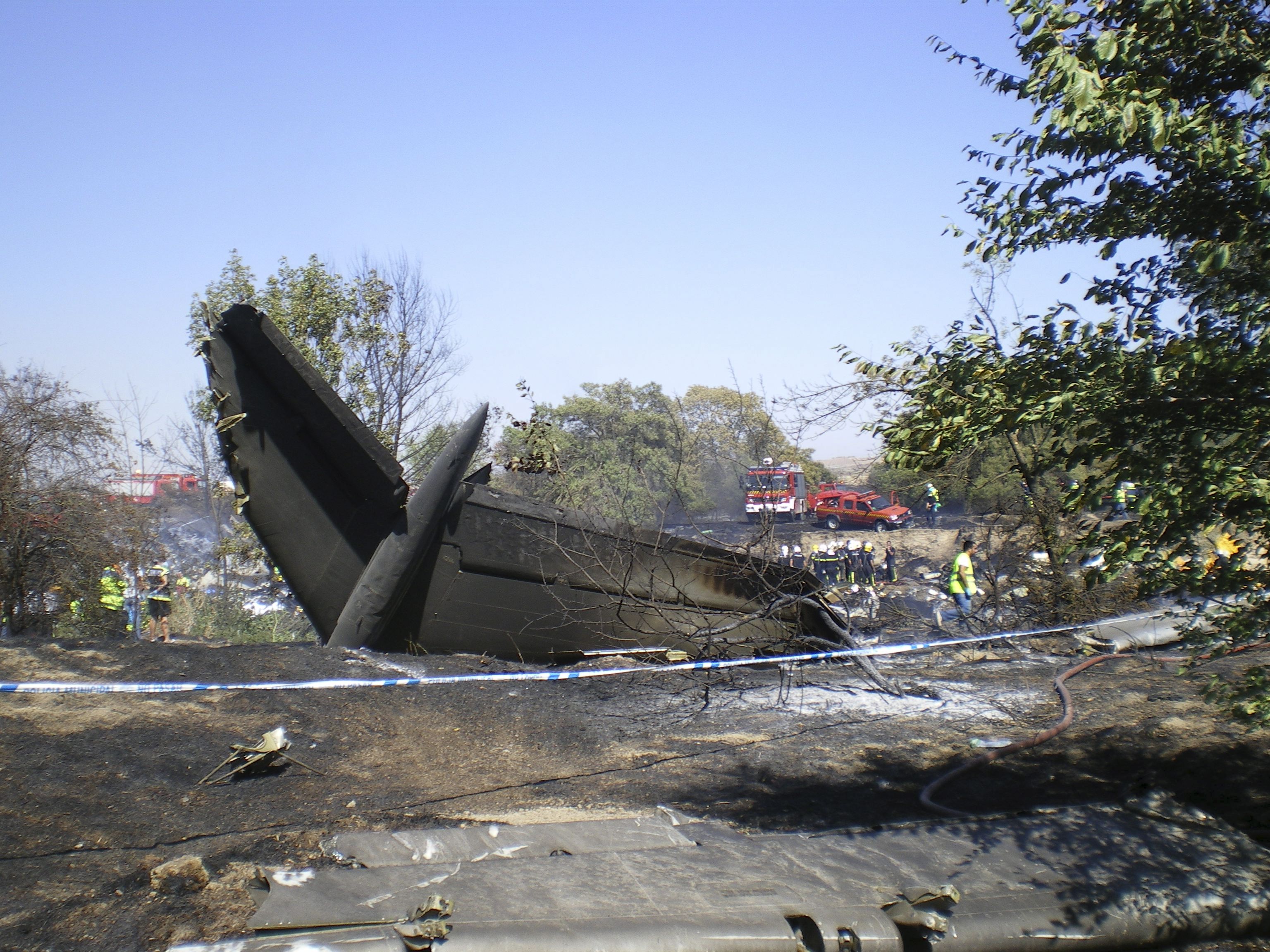
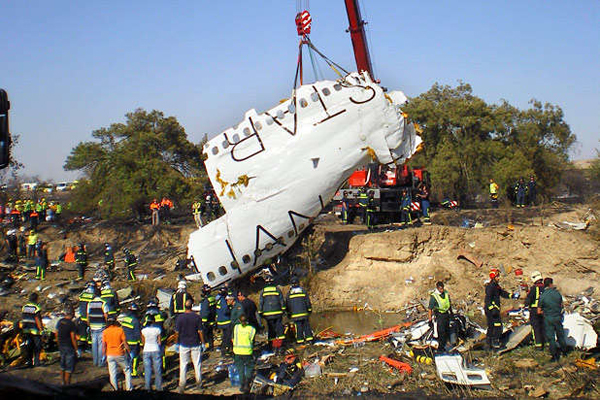
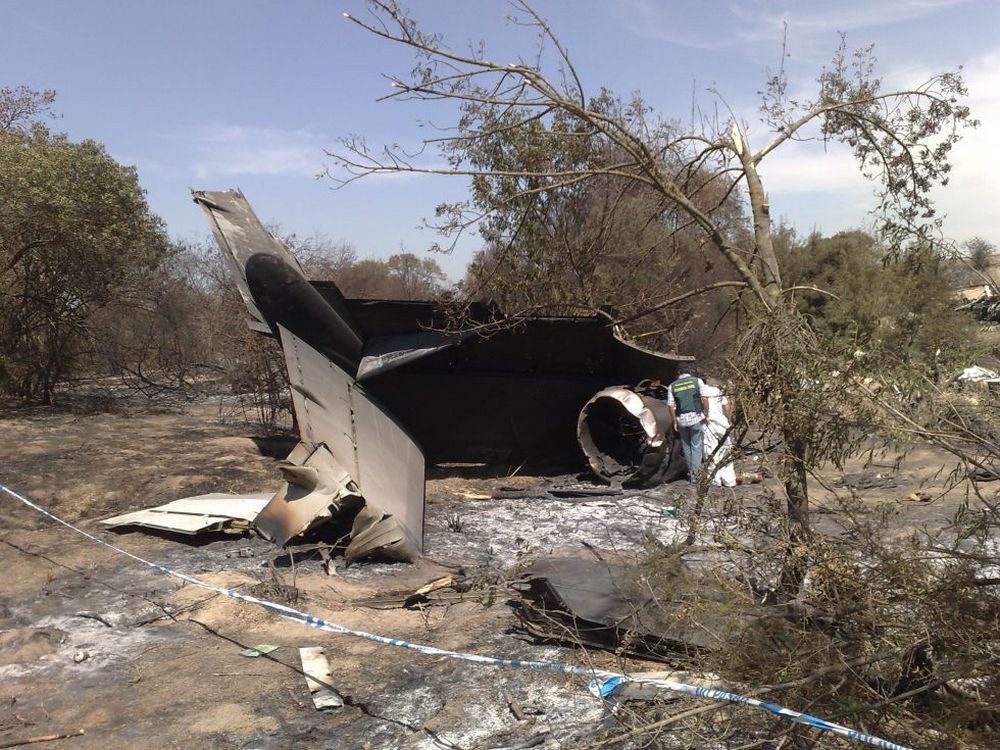

Crash of a McDonnell Douglas MD-82 in Phuket: 90 killed
Date & Time:
Sep 16, 2007 at 1540 LT
Registration:
HS-OMG
Survivors:
Yes
Schedule:
Bangkok - Phuket
MSN:
49183/1129
YOM:
1983
Flight number:
OG269
Crew on board:
7
Crew fatalities:
Pax on board:
123
Pax fatalities:
Other fatalities:
Total fatalities:
90
Captain / Total hours on type:
4330.00
Copilot / Total hours on type:
1240
Aircraft flight hours:
65965
Aircraft flight cycles:
35498
Circumstances:
On 16 September 2007 at approximately 14:30 hours, One Two Go Airlines' McDonnell-Douglas MD-82 airplane with nationality and registration mark HS-OMG, departed on a scheduled passenger flight number OG269 from Don Mueang International Airport for Phuket International Airport with 123 passengers and 7 crew members on board. The Pilot-in-Command (PlC) seated on the left was a Pilot not Flying (PNF) / Pilot Monitoring and the Co-pilot seated on the right was a Pilot Flying (PF). The flight was en route on airways G458 at Flight Level (FL) 320 (32,000 feet) and the estimated time of arrival at Phuket International Airport was 15:50 hours. At 15:36:21, during the time that flight OG269 was approaching the Phuket International Airport, the Orient Thai Airlines flight OX2071, while vacating from Runway 27 after landed at the Phuket International Airport, reported the Air Traffic Controller (ATC) of the weather condition prior to landing that Cumulonimbus (CB) was over the airport area and there was windshear at 5 nautical miles before reaching the Instrument Landing System (ILS) station, resulted in airspeed gain and loss of 15 knots. The ATC asked flight OG269 whether they acknowledged the weather conditions reported by flight OX2071, because both flights were on the same aerodrome radio frequency (118.1 MHz). The PlC of flight OG269 acknowledged the information and extended the landing gears for landing. At 15:37:31, the ATC informed flight OG269 of surface winds from 240 degrees at 15 knots and gave clearance to land on Runway 27 with-wet runway precaution. At 15:38:27, the ATC informed flight OG269 of surface winds from 240 degrees at 30 knots and asked the flight OG269 to state its intention of landing. The flight OG269 affirmed. At 15:39:00, the flight OG269 requested for information of surface wind condition. The ATC informed a surface wind condition of 240 degrees at 40 knots and the flight OG269 acknowledged. At that instant, the Radio Altitude Aural Call-Out system automatically called out '500 feet' and the PlC called out that the airspeed was at 136 knots. At 15:39:23, the PlC ordered for more engine power and reminded the copilot that the airplane was descending below the ILS glide path. The copilot affirmed the correction. The PIC then ordered to increase engine power three more times. During that time, the airplane was at the altitude of 100 feet. At 15:39:45, the Radio Altitude Aural Call-Out system automatically called out '40 feet' and the Enhanced Ground Proximity Warning System (EGPWS) called out 'sink rate - sink rate' . At 15:39:49, the copilot called out for a go-around and the PIC said 'Okay, Go Around'. At 15.39.50, the copilot called for 'flaps 15' and transferred the airplane control to the PIC. Then, the PIC told the copilot to set the autopilot airplane heading and to retract the landing gear. At 15 :40: 11, the airplane veered off and hit an embankment located in the North of Runway 27 and broke up in flames. 40 people were rescued while 90 others were killed, among them five crew members.
Probable cause:
After thorough investigation, the AAIC determined that the probable causes of accident are as follows:
1. the flight crew did not follow the Standard Operating Procedure (SOP) of Stabilized Approach, Call Out, Go Around, and Emergency Situation as specified in the Airlines’ Flight Operation Manual (FOM).
2. the Take Off/ Go Around (TO/GA) switch was not pressed, resulting in the failure of increasing in airspeed and altitude during the go around. Also, there was no monitoring of the change in engine power and movement of throttle levers, especially during the emergency situation.
3. the flight crew coordination was insufficient and the flight crew had heavy workloads.
4. the weather condition changed suddenly over the airport vicinity.
5. the flight crew had accumulated stress, insufficient rest, and fatigue.
6. the transfer of aircraft control took place at a critical moment, during the go around.
1. the flight crew did not follow the Standard Operating Procedure (SOP) of Stabilized Approach, Call Out, Go Around, and Emergency Situation as specified in the Airlines’ Flight Operation Manual (FOM).
2. the Take Off/ Go Around (TO/GA) switch was not pressed, resulting in the failure of increasing in airspeed and altitude during the go around. Also, there was no monitoring of the change in engine power and movement of throttle levers, especially during the emergency situation.
3. the flight crew coordination was insufficient and the flight crew had heavy workloads.
4. the weather condition changed suddenly over the airport vicinity.
5. the flight crew had accumulated stress, insufficient rest, and fatigue.
6. the transfer of aircraft control took place at a critical moment, during the go around.
Final Report:
